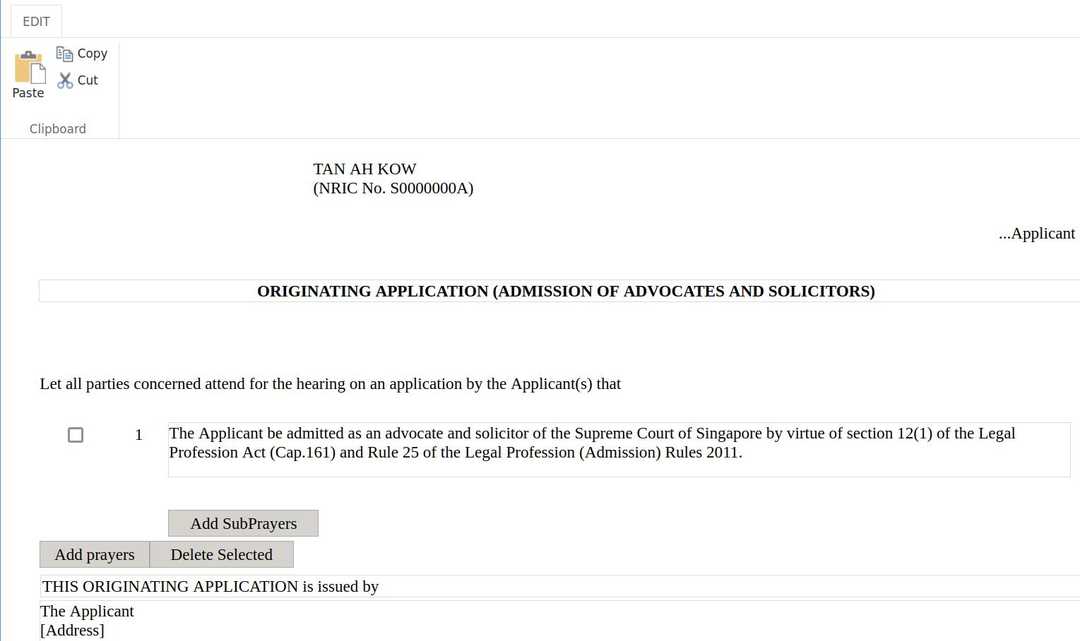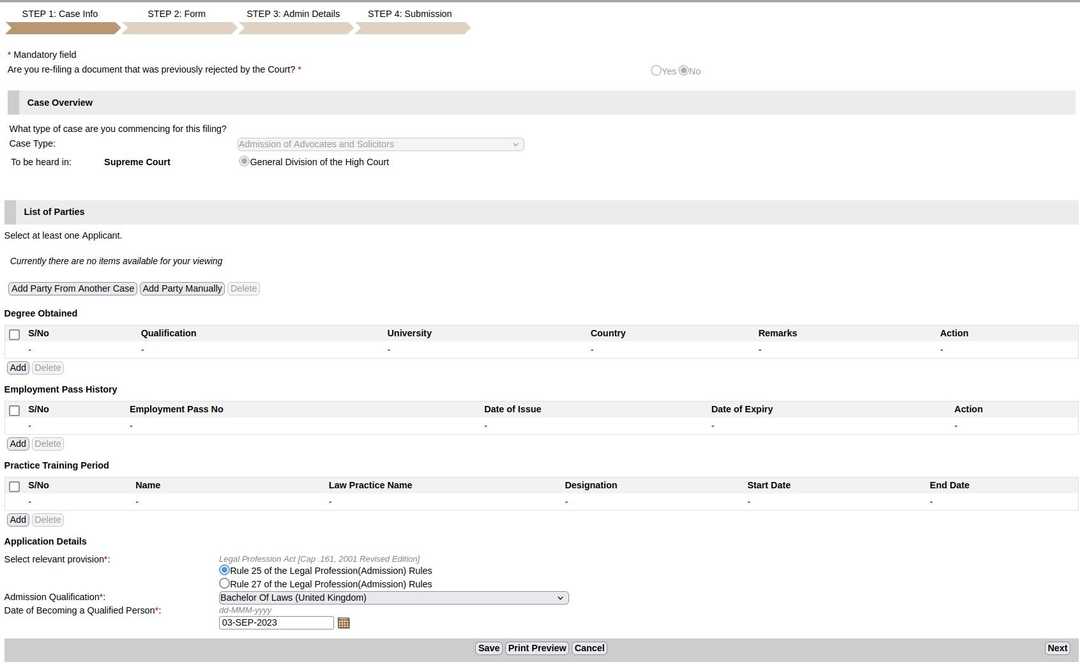Applying for admission to the Singapore Bar: the Originating Application
Filing your OA and commencing your application
After you become a QP, and ideally at least 30 days before you complete your TC, you should file your Originating Application (OA).1 SILE additionally suggests that the OA be filed:2
After receipt of SILE’s Letter of Registration as Qualified Person and at least 60 days before the date fixed for hearing application of admission. It is not necessary to wait for release of Part B Exam results before filing [OA]
Content
You can refer to this template OA to see the general form that the OA should take. You can also refer to this eLitigation guide when actually filing the OA via eLitigation, although it seems it may be a little out of date. If you file via eLitigation, there is no need to upload your OA as a document — you can compose your OA via eLitigation which ensures that it is already in the right format.
You can't amend the default prayer so don't worry if it hasn't been updated and still refers to the "Legal Profession Act (Cap.161)" instead of the Legal Profession Act 1966.
You will need to fill in the following information into eLitigation when filing your OA:
- Party details (i.e. your details)
- NRIC / Passport Number
- Gender
- Place of Birth
- Date of Birth
- Citizenship
- Religion and whether Affirming or Swearing
- Marital Status
- Residential Address
- Mobile Number
- Email Address
- Details about your degree
- Country of University
- Name of University
- Type of Qualification (Bachelor of Laws, Doctor of Jurisprudence, etc)
- Class of Degree
- Length of Degree Course
- Degree Course Admission Date.3
- Date of Conferment of Degree
- Details about your TC
- Name of Supervising Solicitor
- Law Practice Name
- Date of Commencement of Training Contract
- Estimated date of completion of Training Contract
- Rule under the LPAR pursuant to which you are filing for admission (Rule 25 or Rule 27) — this should be Rule 25 unless you are already a Malaysian practitioner
At the same time that you file your OA, you will also have to file SILE's letter of registration confirming that you are a QP.
Timing
The OA will expire a year after it is filed if no party to the matter takes any step that is recorded in the court's records.4 This occurred, for instance, in Re Rajagopal Muralitharan5 where the applicant's Originating Summons (as it then was) expired because the applicant had to resit the Part B examinations and it was not possible for him to take any further steps to pursue the matter. Under such circumstances, the applicant should have applied for an extension of time.6
- r 25(2) LPAR states that the application should be made via an OA (formerly known as an originating summons) as opposed to an originating claim.↩
- See SILE's Guide to the Admission Procedure in General↩
- This should technically be the date on which you "secure a place as a candidate for the course of study", i.e. the date you were informed you were admitted to the university, rather than the date of your matriculation or the first day of the term, etc (per r 3 LPQR). See Jack Tsen-Ta Lee (1997), p 462 - 463. However, I know of many people who were not aware of r 3 and who put down the date that they matriculated or registered with the university instead and this was not raised as an issue and did not in any way impede their call.↩
- O 16 r 7(2), ROC 2021.↩
- [2023] SGHC 133↩
- Under what is now O 16 r 7(9), ROC 2021.↩


